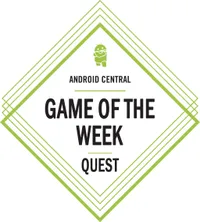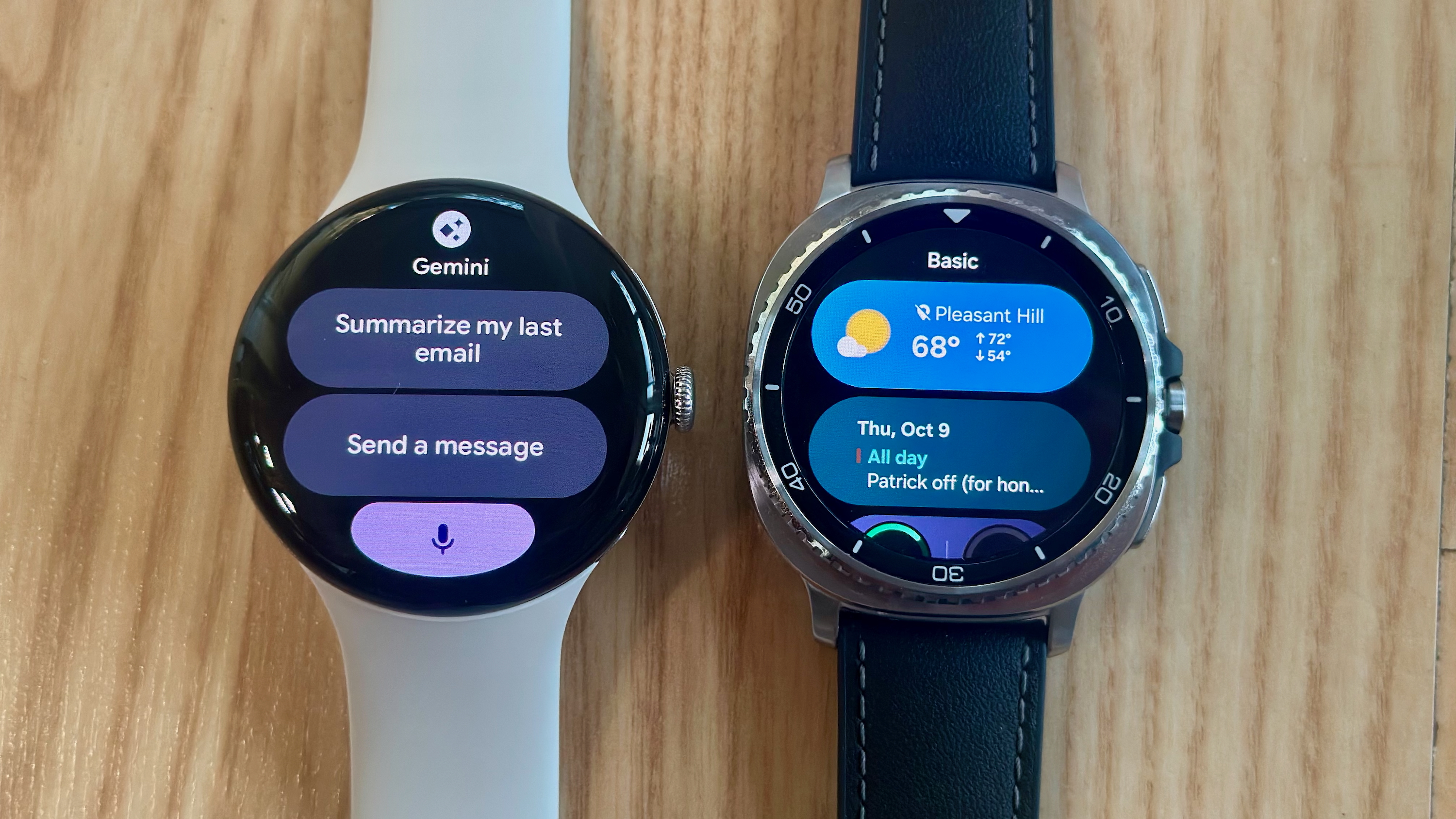Little Cities shows how simpler VR games can be the most fun
A cozy city-building sim.
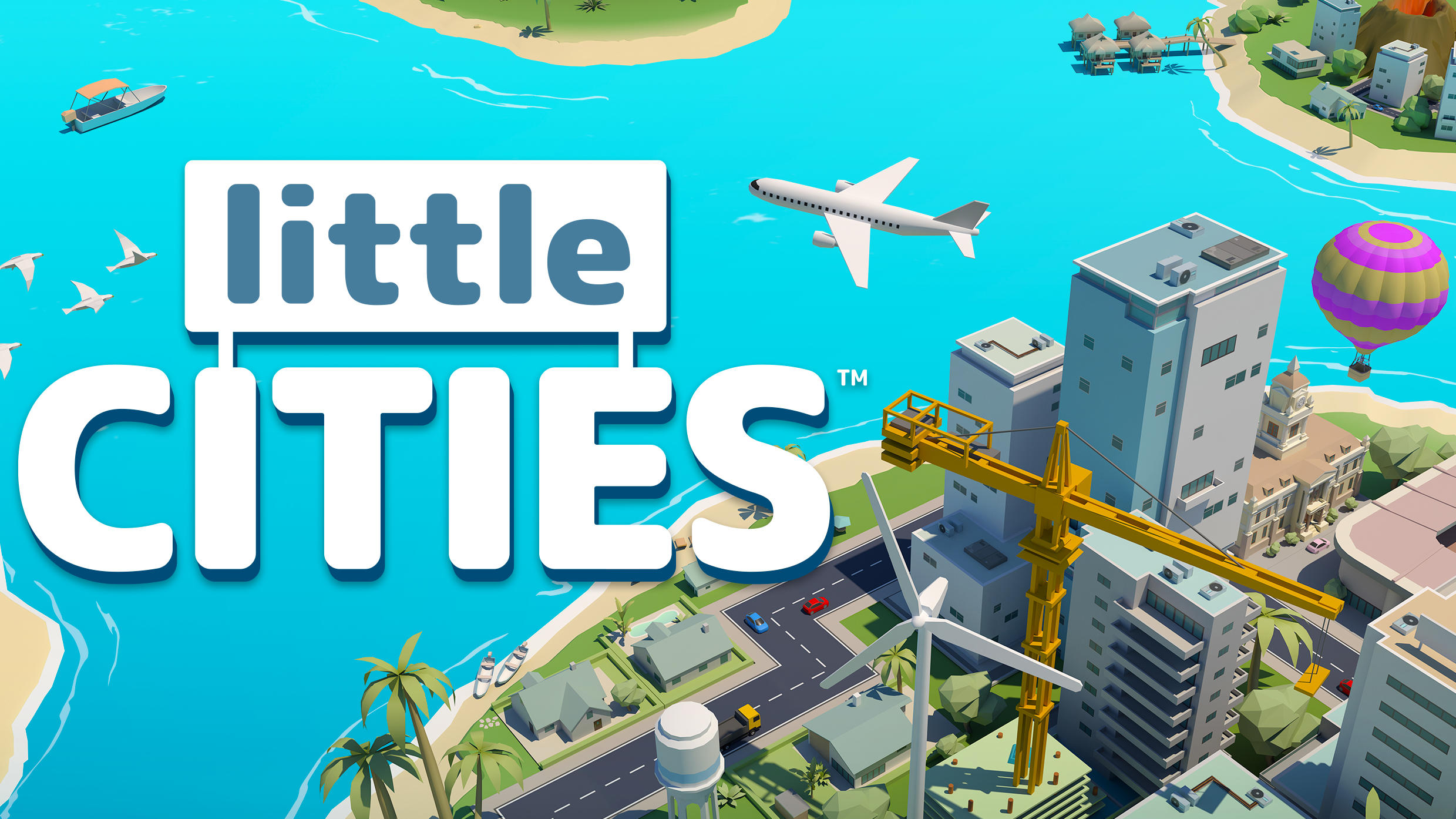
When the topic of VR comes up in conversation with friends, a common gripe I hear is that VR games still aren’t on par with non-VR games because they don’t offer lengthy experiences and aren’t as complex. It’s a complaint I not only fully understand but also agree with. There are outliers to this, of course, but VR gaming is still in a growing stage; it’s going to take some time before we have a game as lengthy or intricately designed as something like Elden Ring.
My issue is with the idea that VR games are inherently lesser in quality just because they tend to be short and easy. A game isn’t only worthy of being played if it offers complex gameplay systems and a 40 hr+ adventure. I’m a sucker for the Ubisoft-style of open-world games, love the Soulsborne series, and I’m a massive fan of JRPGs, so it’s not that I dislike long or challenging experiences — just the opposite, in fact. But I also like games that are short and simple, because length and difficulty have no correlation to how enjoyable a game is.
Little Cities is a shining example as to why simple VR games can offer the same level of enjoyment as any other. It’s a city-building sim for people who don’t want to fuss with the usual complexities of the genre. It’s easy, cartoony, and it’s my favorite Quest 2 game of the year so far.
Our Oculus Quest Game of the Week column highlights recent Meta Quest titles, indie gems, App Lab up-and-comers, or cool sideloaded mods. Games that we didn't have time to review but deserve recognition.
The basics
Little Cities isn’t a traditional city-builder by any means. You don’t have to worry about managing finances and altering taxes, for example, and pipeline networks are automatically constructed for you after plopping down a water tower. It’s a gameplay loop that admittedly lacks much challenge and depth. But while I usually love micromanaging when playing these types of sim games, it was fun to focus more on building my city than running it, and I enjoyed this laidback approach to the genre.
The unintentionally simplistic gameplay of Cities: VR — the game Little Cities is inevitably going to be compared to — proved to be an overall letdown. Cities: VR bit off more than it could chew in its ambitious promises of being “the definitive city-building VR game.” Its attempt to adapt the gameplay of Cities: Skylines to VR meant major gameplay compromises had to be made. Rather than offer new twists on gameplay mechanics to take advantage of VR and compensate for those missing features, Cities: VR just cut them.
But Little Cities sidesteps this issue by leaning into its simplicity in every way, from its chunky and colorful visual style to the overall gameplay design. It’s fast and satisfying, sucking you in with that endless “just one more level” feeling that will drain your headset's battery before you even realize it. It’s an accessible, engrossing city-builder that feels possible only in VR.
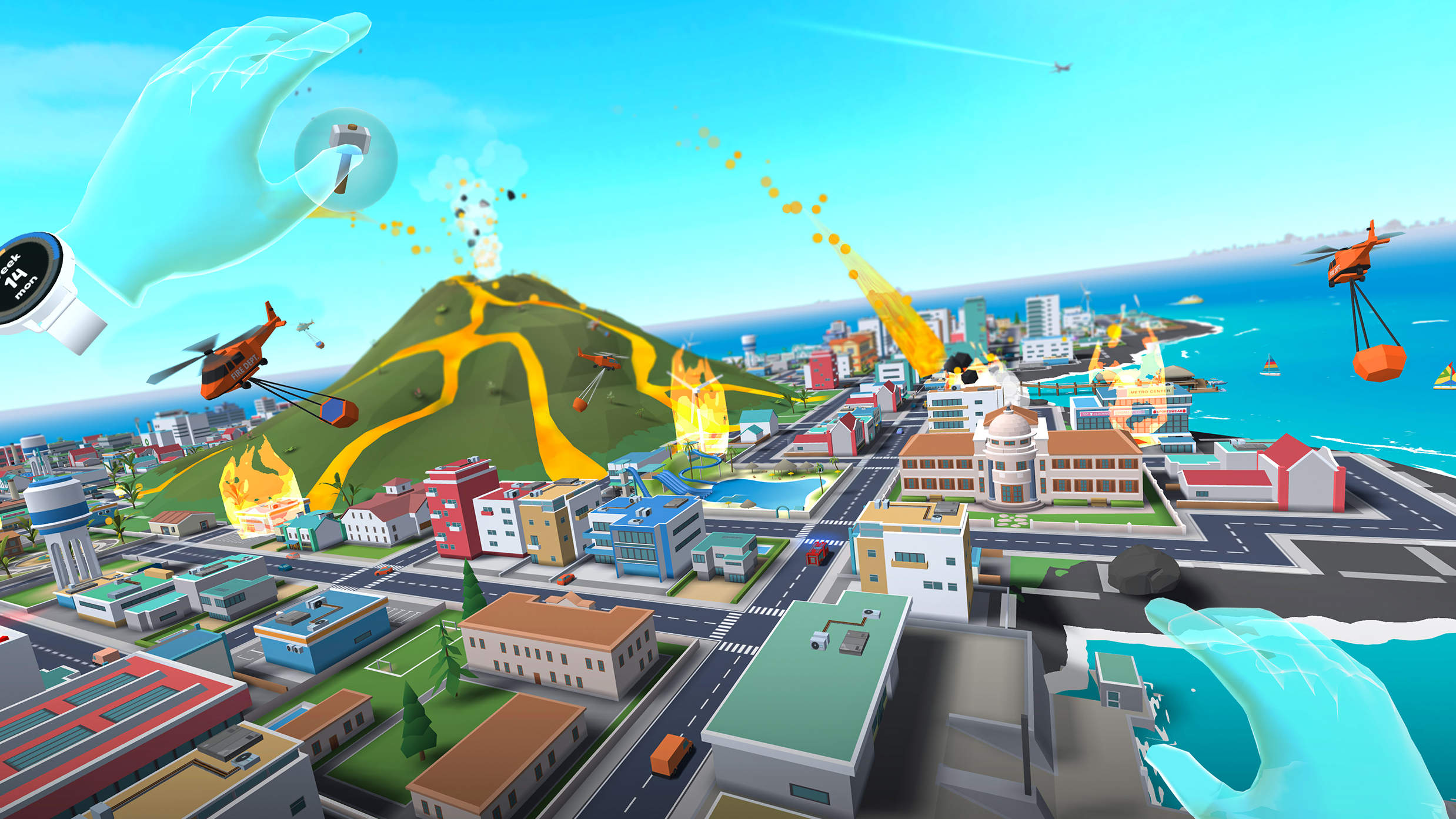
Little Cities is centered around a campaign mode of sorts. There are six islands that each present their own unique layouts, aesthetics, and mechanics. The second island, for example, has dust storms that you’ll need to counter through proper placement of trees, while another island has you dealing with volcanoes. New islands can be unlocked once the previous one has reached a certain level.
Get the latest news from Android Central, your trusted companion in the world of Android
Leveling up your city is done by maintaining your city’s happiness and quality of life. Doing so involves your standard city-builder formula, such as ensuring there’s enough water and electricity, and balancing your residential, commercial, and industrial zones. You not only gain access to more buildings as your city levels up, but more of an island’s building area as well.
Leveling up your city is done by maintaining your city’s happiness and quality of life.
It’s this type of progression that makes playing Little Cities feel rewarding. Leveling your city in Cities: VR meant only unlocking new buildings; your tiny map area couldn’t be expanded, trapping you in a cycle of demolishing and restructuring your plot of land. Initially Little Cities also restricts you to a small map, but it soon rewards you with more space as you chug along and hit progression milestones.
The only true issue I have with the game is how long it can take to level up. I’m no stranger to the genre, so maximizing the full potential of my city wasn’t difficult for me; that’s fine, because difficulty isn’t the aim of the game. But being forced to wait a certain amount of time before I could unlock new buildings and areas of the map was a bit irksome. I often felt like I was running too far ahead of Little Cities and I wish it could have kept up with my pace.
Taking advantage of VR
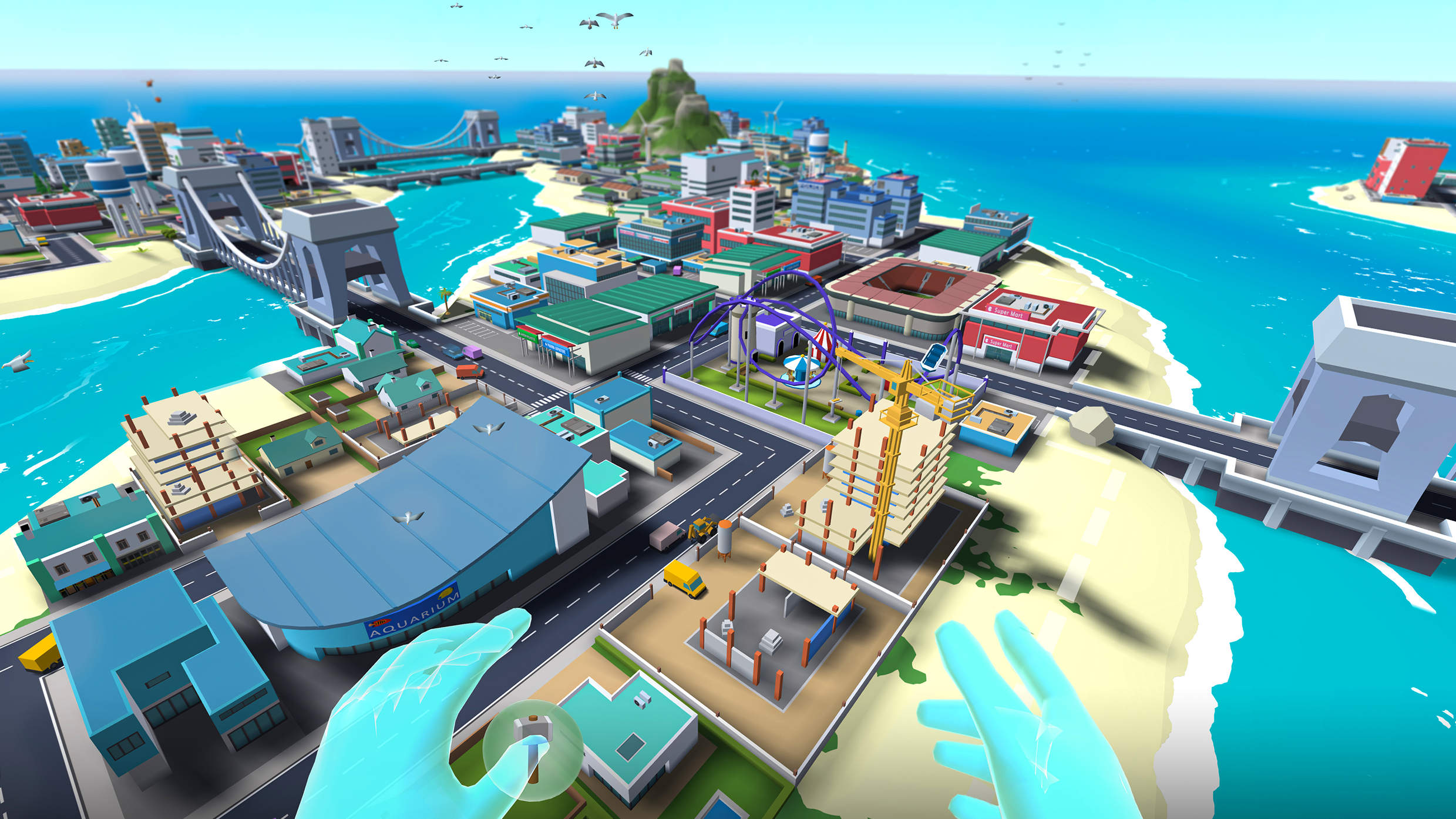
One of the things I love the most about Little Cities is how it just feels good to play. A quick turn of your wrist shows you all the information you need on your city’s stats, letting you know if your city needs a focus on additional zones or if your citizens aren’t getting enough energy sources. There are no menus you have to dive into.
When building roads and placing buildings, you’re presented with a collection of icons inside of bubbles. You physically pop a bubble with your finger in order to make your selection, complete with a satisfying sound. It’s not too far from Cities: VR’s control scheme, but something about this whimsical approach makes the UI seem more tactile and allows for a stronger sense of immersion.
The game provides a wonderful sense of scale and physical presence in the virtual world.
Building your city feels like being inside of a virtual toybox. Rather than just giving you a cursor, your controllers are constantly depicted on screen as giant, translucent blue hands. It seems like a very trivial detail on paper, but when you’re playing the game, it gives you a wonderful sense of scale and physical presence in the virtual world. Using my fingers to poke bubbles and decide where I wanted to place a new road made me feel like I was a kid building with my Lego sets. It’s the strongest example as to why VR helps Little Cities to work as well as it does.
Building bigger and better
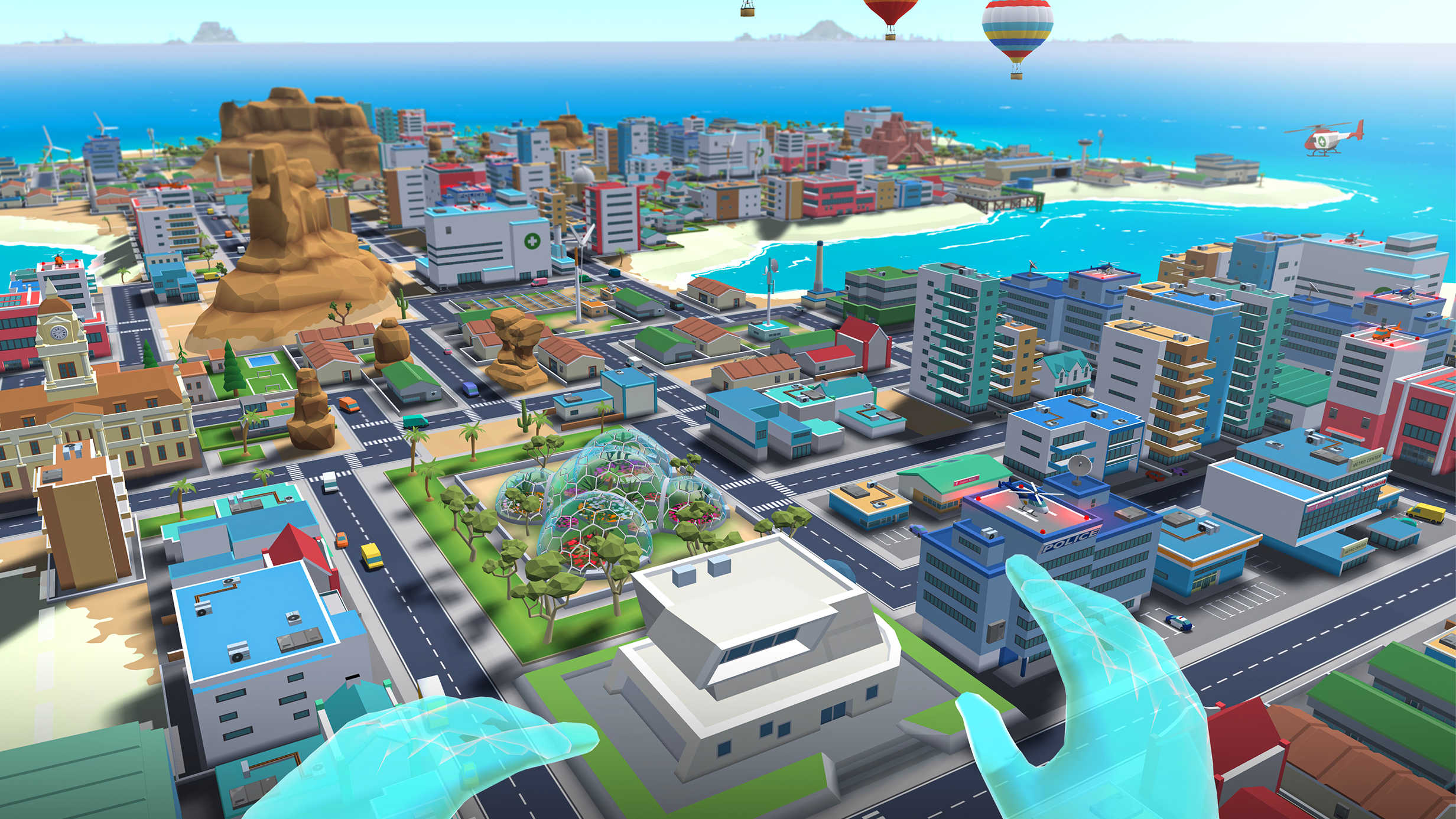
The roadmap for Little Cities already includes a planned update that adds hand tracking support, which is great for anyone looking for a new addition to the best hand tracking games on Oculus. In July, new buildings and cosmetic items are planned to be added. Little Cities is already a great game and I’m looking forward to seeing how Purple Yonder will continue to support it going forward.
I’m not completely sure if I'd consider Little Cities to be one of the best Quest games, but I can recommend it to anyone remotely interested in its gameplay. What really cements my enjoyment is how unabashedly joyful it is. The world is full of nothing but vibrant colors. Tiny hot air balloons will randomly float past your face and whales will swim in the distance. Every time you level up, a crowd cheers while fireworks go off and dozens of balloons release from the sky. The aesthetic blends perfectly with the laidback gameplay.
Little Cities is a sugary, candy-coated piece of escapism, and it’s one that’s very much welcomed.
Little Cities
Build the city of your dreams with a different kind of city-building sim. The simplistic gameplay loop and colorful graphics of Little Cities will leave you with a smile.
Buy at: Oculus

Nick is a freelance journalist and games reviewer with a passion for RPGs, bad puns, and VR. When he isn’t guesting on podcasts or streaming on Twitch, he’s probably playing Borderlands with his husband.
